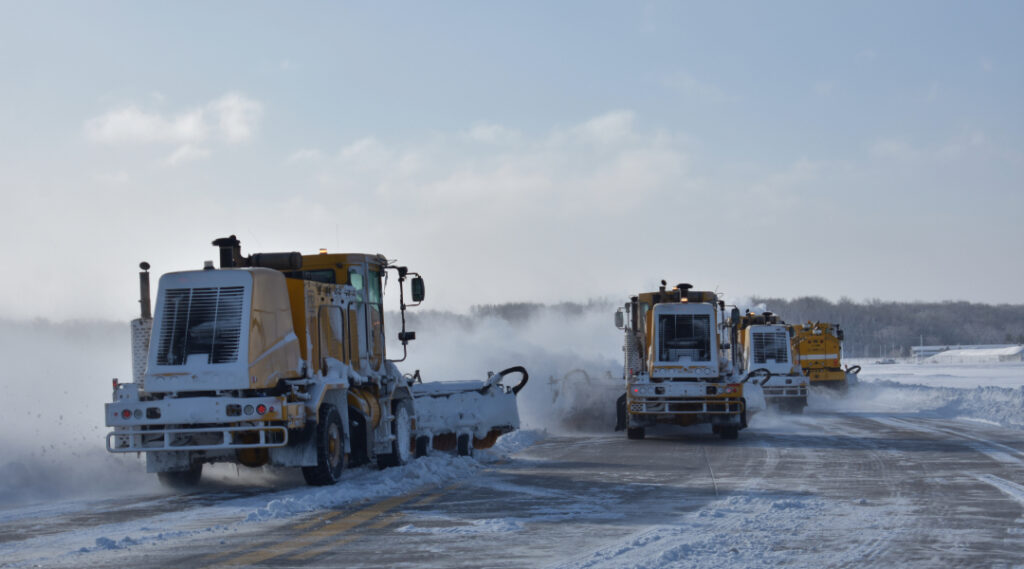
From the Director’s Desk: Mother Nature vs. MLI
February 12, 2024

January was one of the snowiest months on record in the Quad Cities, and if there’s anything that can wreak havoc on air travel, it’s snow and ice. Slow moving storms can stretch across multiple regions for days at a time. Despite getting 25 inches of snow in just a few days, MLI airport snow removal teams kept the airfield in amazing condition all things considered, so I want to not only acknowledge their hard work, I want to offer you a peek behind the scenes of winter operations at an airport to help you better navigate your travel plans.
Preparing for winter weather starts in September at the QC Airport. Operational policies and procedures are reviewed, and seasonal workers are trained on various machines. The airport has:
- Five 18-foot wide brooms
- Two nine-foot wide snow blowers that can blast snow 200 feet in the air
- Two front-end loaders with box blades
- One road grader
- Two 22-foot wide snow plows
- One 100-foot wide liquid de-ice sprayer
- Six pick-up trucks
- Five tractors
This fleet is used to push, sweep and move snow off of miles of concrete to keep the airport operational during a snowstorm. While the snow removal crews work, the airport operations coordinator tests the surface conditions of taxiways and runways. A special mechanism in their vehicle gauges how easy it is to brake which is then relayed to pilots and air traffic control. From there, pilots communicate with air traffic control so they know not only what’s happening locally, but what impacts there may be on their flight path or at the next destination. The pilot ultimately decides if the conditions allow for a safe takeoff or landing.
One thing that makes winter weather particularly challenging for airports is that there’s very little we can do to prevent ice or snow build-up. Salt is off limits because it’s corrosive to aircraft. That’s why we use the fleet of heavy equipment and get to work with as little as a ½ inch of snow accumulation.
Planes must also be clear of snow and ice to operate safely, and that’s where de-icing comes in. Airlines are individually responsible for de-icing their own aircraft. When temperatures dip near freezing or below, a special liquid is applied to the outside of the aircraft to remove ice and prevent build-up. But that liquid expires after about 30 minutes. Thirty minutes is a long time when conditions are clear. But when snow is flying and quickly accumulating, it’s a race against the clock. De-icing is not only an important safety measure, it’s required and can only be done within a short amount of time prior to takeoff.
While it may be frustrating when a flight is delayed or canceled, know that your flight crew must consider what is safest for everyone on board. During a storm, and sometimes days afterward, airlines may continue to experience what’s known as downline delays. Aircraft may be out of position in their network from being diverted to other cities to wait out the storm, delays may cause crew members to time out – meaning they cannot legally work until they’ve taken a specific number of hours off, and crew may also be struggling to get to their next flight, in addition to simply recovering the schedule and getting all the pieces of the puzzle back together again.
Winter weather is challenging. But safety must come first for the people that are working to keep airports running and planes flying and for the passengers and crews.
